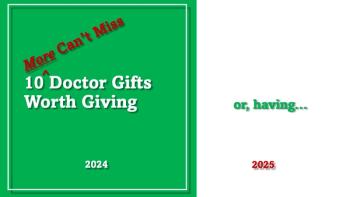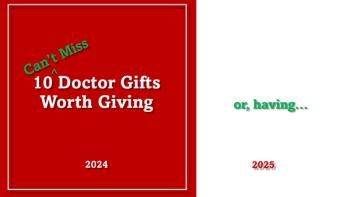
Capitalize on Mobile Health Growth
There's no denying the growth of mobile health, which is the top trend that will reshape health care in 2013. However, the question remains: What will the impact be on physicians and their medical practices?
There’s no denying the
That should come as no surprise. Two-thirds (66%) of IT teams in health care organizations said that doctors were using
Stein Soelberg, director of marketing for
“The technology has improved,” he says. “You’re getting smaller devices that have better battery life, that are much more reasonably priced. Anyone who knows the law of supply and demand can see you’re going to get mass adoption.”
However, the question remains: what will the impact be on physicians and
Favorable trends
There are several
Soelberg explains that one of the biggest reasons patients have to come in for appointments and physically meet face to face with a caregiver is they’ve been prescribed a medication and they’re not taking it as they should be. But now there are now pill bottles that have
“Anything we can do to lessen the strain on the system, meaning scaling so that more patients can get higher quality care with fewer office visits, is going to make the insurance companies happy, it’s going to make the doctors more efficient, it’s going to make everybody’s lives that much better,” Soelberg says.
The two health care segments where Soelberg expects to see the most prominent growth with regard to mobile health are cardiac monitoring and diabetes monitoring, or glucose management — the latter is especially true where elderly patients or young children are concerned.
“You take the guesswork out of the equation,” he explains. “The machines are doing the work and making sure the device is operational, first of all, to make certain the patient’s blood sugar levels are where they should be — and if proactive measures need to be taken, that they’re taken quickly. For parents of children, it allows those children to resume a much closer semblance of a normal life. Those are two areas where I expect to see a lot of proliferation of these health devices.”
Being in position
George MacGinnis, telehealth expert at
The first is that technology can help maximize revenue from current operations, improving inward referrals and helping to improve clinical throughput. Second, it can also help to manage key business risks, such as maintaining patient loyalty by offering an improved experience for ordering repeat prescriptions or more timely response to test results.
“Lastly, as clinical practice becomes more complex, mobile access to health records and clinical guidelines will become as indispensible a part of the doctor’s bag as the stethoscope has been over the last 100 years,” MacGinnis explains.
Soelberg agrees, adding that physicians also need to understand the benefits and features of mobile health tools. For example, a cardiac remote monitoring product for somebody who is in an extremely rural area where connectivity may be diminished or non-existent, won’t work in that context.
“Physicians need to educate themselves on where the technology can be best used, and who are the most appropriate targets for those applications,” Soelberg says.
The learning curve, however, should not be steep.
“I think the providers of these technologies are very sophisticated, and they’ve put together pretty usable applications for monitoring and warning,” Soelberg says. “And anybody who can own or operate an iPhone is going to be capable of learning this.”
Read more:
Newsletter
Stay informed and empowered with Medical Economics enewsletter, delivering expert insights, financial strategies, practice management tips and technology trends — tailored for today’s physicians.



















